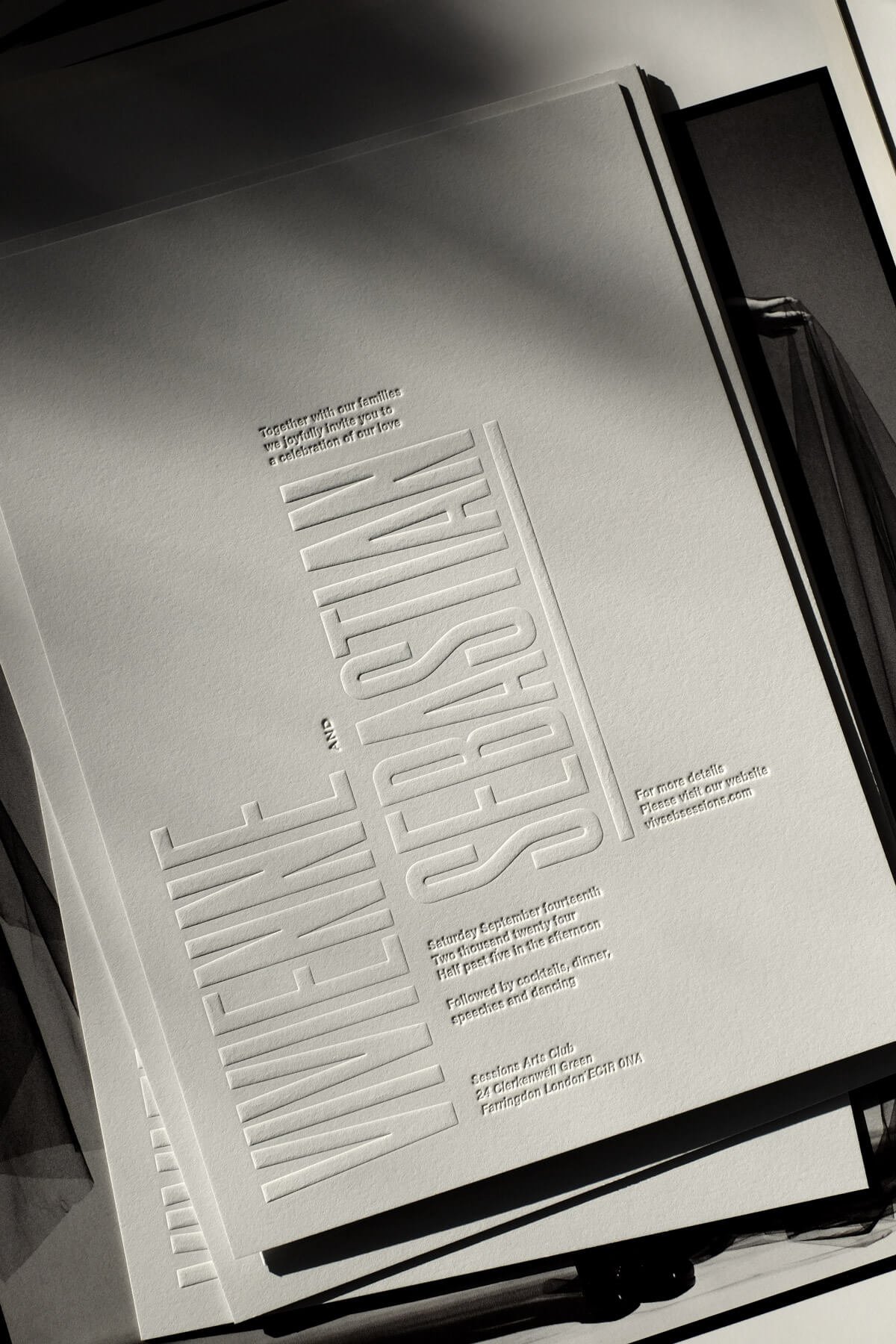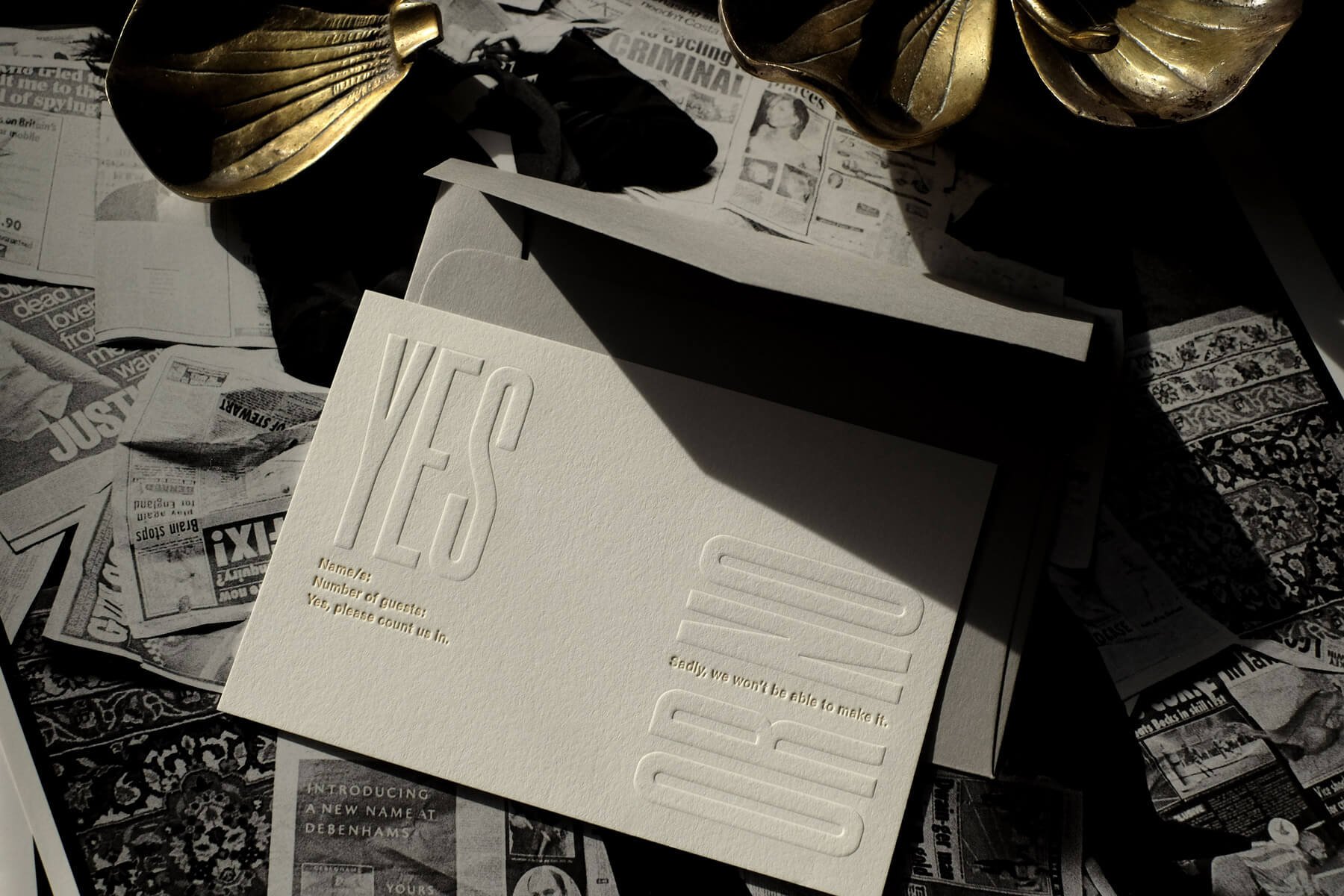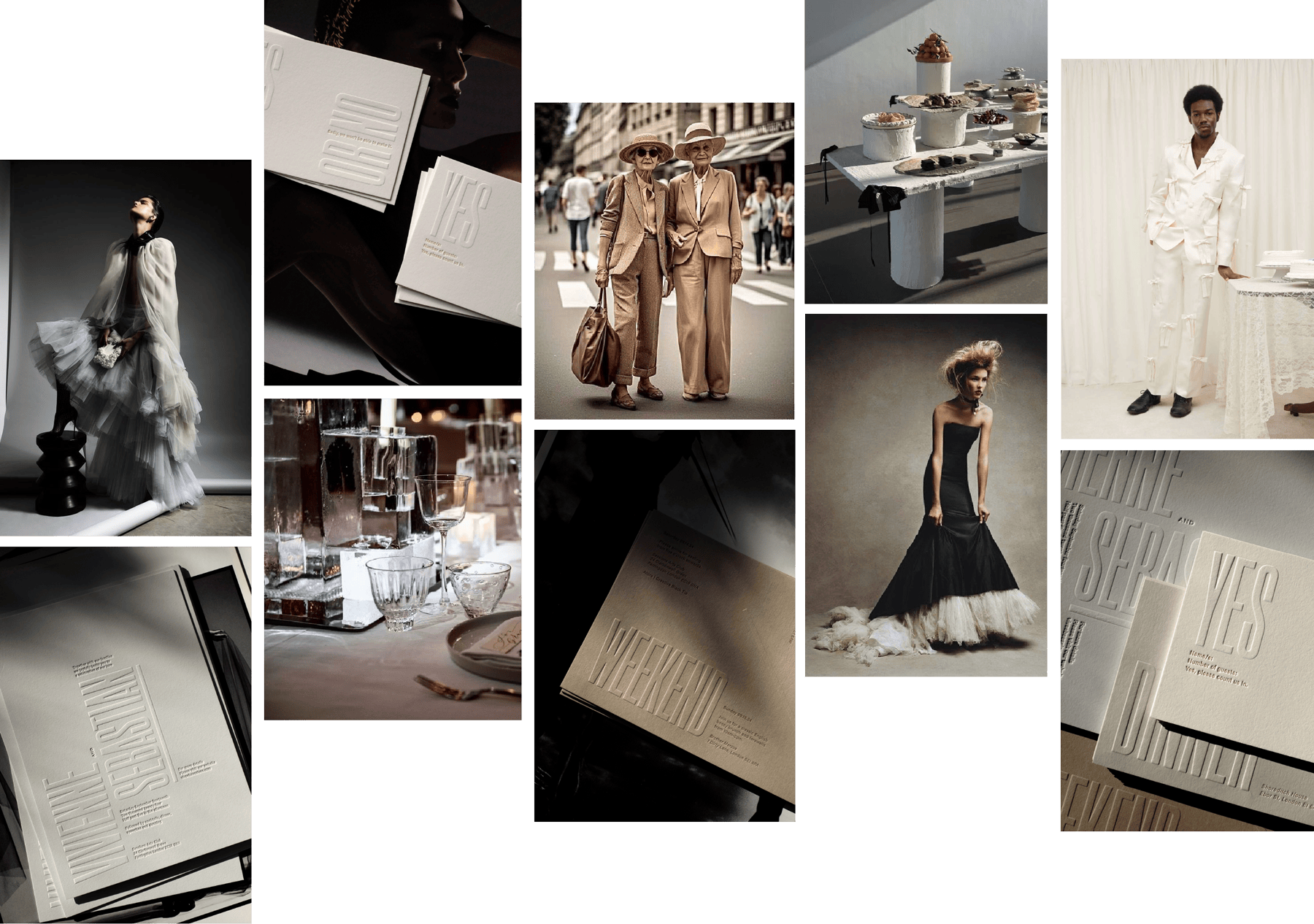First of all, what defines an embossed wedding invitation? People often confuse the words embossing and debossing or use “embossed” mistakenly to refer to any type of letterpress printing, when in fact these are very different techniques. Embossing requires two print plates or dies - often referred to as the male and female, and the paper is placed between them to create a raised, relief effect when pressure is applied. The embossed text or graphic elements are pushed upwards through the paper, creating a tactile relief and dramatic shadows; perfect for creating striking and memorable wedding stationery.
Embossing can be done with inks, foils, or without color altogether, in which case it is called “blind embossing.” And blind embossing is our love language. Because of the two print plates which slot into each other, blind embossing allows for a deep impression even without the application of any ink or foil colors.
Embossing is most notably used in Braille - the tactile written language form invented for the visually impaired - which allows readers familiar with the Braille alphabet to interpret words and letters through touch.
Why do couples choose embossed wedding stationery?
A meaningful way to truly honor your guests
Because of the elaborate set-up and skilled craftsmanship required to create embossed pieces, embossing is one of the most expensive and luxurious print techniques. Embossing also requires specific fine papers that can withstand the pressure required to produce the raised relief effect without tearing.
For these reasons it is often reserved for luxury packaging and special occasions such as weddings, baptisms, bar-mitzvahs, etc. It’s really a print & paper way to say, this event is incredibly meaningful to us, and you genuinely would honor us with your presence! And as this is often the first piece of communication that goes out to your guests, choosing an embossed invitation is sure to set the tone for a sophisticated and intentional celebration.
Embossing creates a sense of drama
In the case of our wedding collections, such as The Vanguard, the art of blind embossing takes center stage and allows for bold dramatic names and headings to stand out as graphic elements, whilst at the same time appearing understated because there is no ink.
embossing creates Tactility
Embossed wedding invitations are highly tactile and intriguing to touch and hold. You may have found your one to have and to hold…so we like to create meaningful treasures your guests will enjoy having and holding too! If we’re not going to take full advantage of the wondrous tactility offered by beautiful papers and artisanal printing…we may as well send an email.
Embossed weekend itinerary insert on Macchiato paper from The Vanguard Collection by The Letterist.
WHAT ELSE SHOULD I KNOW ABOUT embossed wedding invitations?
While we love embossing and blind embossing without reservations, there are a few fine details to bear in mind when choosing this technique for your wedding stationery.
Rather than relying on the contrast of ink on paper, blind embossing relies on light and the casting of shadows to make words stand out and appear legible. This means blind embossed text can be hard to read in dim light and the reader may have to move and tilt the piece around to catch the right shadows.
For this reason, we usually reserve blind embossing for large names or headings only, and use letterpress printing or foil stamping for smaller type where legibility is crucial. We wouldn’t recommend blind embossing all the text on an invitation or menu for example - which people are likely to be reading in dim evening light (and possibly after a few tipples!)
Embossing tends to work best on smooth cotton papers rather than textured, recycled or handmade papers. If you’re wanting to go super eco-conscious or boho with your paper selection, this may not be the right technique.
Embossing is always clearly visible in reverse on the back side of a card, so it's not ideal for double-sided elements. Depending on the layout or text that is embossed and how it appears on the reverse - we can sometimes get clever and slot things into the spaces between.
If you’re planning on having your stationery professionally photographed on your wedding day, traditional birds-eye-view flat-lay photography won’t capture embossed pieces well, again because the casting of shadows from the right angle is essential. Ask your photographer to shoot indoors, near a window and explore different angles to find a spot that best highlights all the details.
LET’S GET EMBOSSING!
If embossing, drama, tactility and doing things differently speaks to you…
see more of The Vanguard collection here.
Or if you’re already sold, get in touch and tell us all about your wedding.





